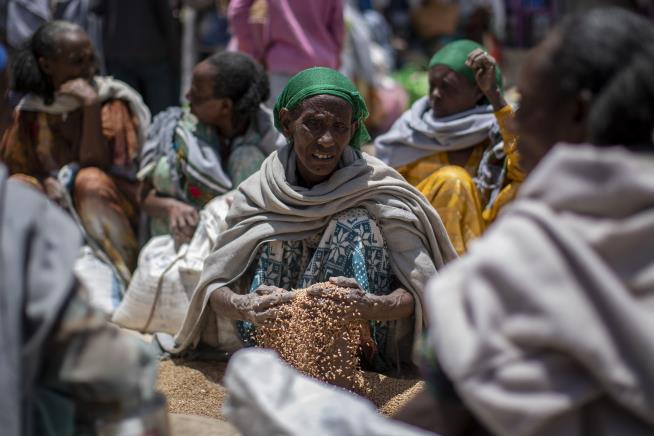
UN: world hunger was dramatically worse in pandemic year
By FRANCES D’EMILIO and EDITH M. LEDERER, Associated Press4 hours, 38 minutes ago
ROME (AP) — The United Nations on Monday lamented a “dramatic worsening” of world hunger last year, saying much of that is likely connected to the pandemic, and it urged billions of dollars to save millions of people from starving.
A report issued jointly by five U.N. agencies said hunger outpaced population growth in 2020, with nearly 10% of all people estimated to be undernourished.
It said the sharpest rise in hunger came in Africa, where 21% of the people — 282 million — are estimated to be undernourished.
U.N. Secretary-General Antonio Guterres said the new “tragic data” shows that between 720 million and 811 million people in the world faced hunger last year — as many as 161 million more than in 2019.
More than 2.3 billion people, which represents 30% of the global population, lacked year-round access to adequate food, according to the report. This indicator, known as the prevalence of moderate or severe food insecurity, leaped in one year as much as in the five previous years combined.
“Despite a 300% increase in global food production since the mid-1960s, malnutrition is a leading factor contributing to reduced life expectancy,” the U.N. chief said. “In a world of plenty, we have no excuse for billions of people to lack access to a healthy diet. This is unacceptable.”
Emily Farr of the humanitarian organization Oxfam said the pandemic was the last straw for millions of people already battered by the impacts of conflict, economic shocks and a worsening climate crisis.
Children paid a high price, with 149 million of those younger than 5 estimated to have stunted growth since they are too short for their age, and more than 45 million children are too thin for their height, the report said. It also noted the paradoxical problem of nearly 39 million children being overweight.
“A full 3 billion adults and children remain locked out of healthy diets, largely due to excessive costs,? the U.N. agencies said, and COVID-19 made things worse.
“In many parts of the world, the pandemic has triggered brutal recessions and jeopardized access to food,? the United Nations said in a summary of its findings. ”Yet even before the pandemic, hunger was spreading; progress on malnutrition lagged.”
“Disturbingly, in 2020 hunger shot up in both absolute and proportional terms, outpacing population growth,” the report’s authors concluded. The report said some 9.9% of the world’s people were estimated to have been undernourished last year, compared to 8.4% in 2019.
Geographically, in addition to the surge of Africans facing hunger, more than half the undernourished people — 418 million — live in Asia, while 60 million live in Latin America and the Caribbean, according to the report.
Oxfam’s Farr said the new figures “are a somber reminder of how broken our global food and economic systems are.”
“More than half the world’s population did not have social protection to cope with the adverse effects of the pandemic,” she said. “Small farmers were forced to watch their crops rot during the pandemic, even when global food prices rose by 40%, while the biggest food companies have amassed over $10 billion of additional revenues last year.”
The United Nations said the pandemic undercut a key U.N. goal of achieving zero hunger by 2030. Based on current trends, it estimates that the goal will be “missed by a margin of nearly 660 million people,” and that some 30 million of that figure “may be linked to the pandemic’s lasting effects.”
Guterres said he is convening a global Food Systems Summit during this September’s annual meeting of world leaders at the General Assembly “to urgently make a change.” He said a pre-summit meeting in Rome at the end of this month is to work out “how we must address hunger, the climate emergency, incredible inequality and conflict, by transforming our food systems.”
The State of Food Security and Nutrition in the World report was prepared by U.N. agencies including the Rome-based Food and Agriculture Organization, the World Food Program and the International Fund for Agricultural Development. The other two agencies were the the United Nations Children’s Fund, commonly known as UNICEF, which is based in New York, and the World Health Organization, or WHO, headquartered in Geneva.
Among the U.N.’s recommendations was one calling for strengthening “the resilience of the most vulnerable to economic adversity,” such as through programs to lessen the impact “pandemic-style shocks” or steep food price increases.
Maximo Torero, the U.N. Food and Agriculture Organization’s chief economist, said removing 100 million people from chronic undernourishment would require an additional $14 billion a year until 2030 — and to achieve the goal of zero hunger by 2030 “we were talking about $40 billion.”
___
Lederer reported from the United Nations
No comments:
Post a Comment